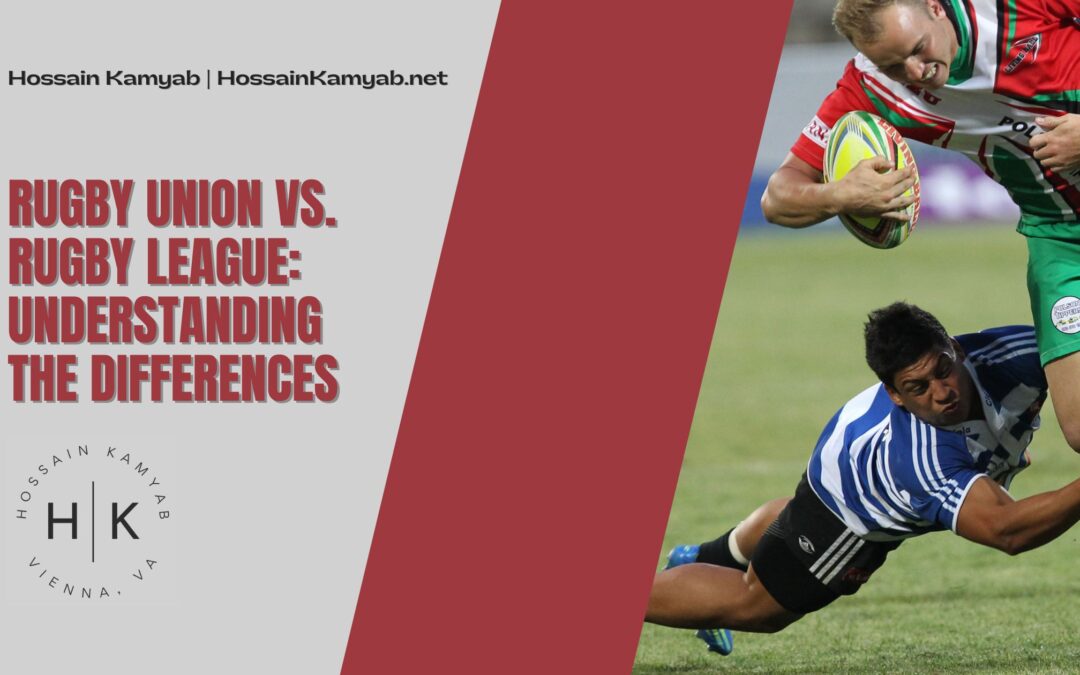Rugby, a sport known for its physicality, strategic gameplay, and passionate fan base, has two prominent variants: Rugby Union and Rugby League. While both share a common origin, they have evolved into distinct forms over time.
Origins and Historical Evolution:
Both Rugby Union and Rugby League trace their roots to the original rugby football, played at Rugby School in England during the 19th century. However, their paths diverged in 1895 due to a disagreement over compensation for players who had to take time off from work to participate in matches.
Rugby Union:
– Formation: Rugby Union retained the amateur ethos, and the Rugby Football Union (RFU) continued to oversee the sport.
– Global Popularity: Rugby Union gained widespread international popularity, becoming one of the most played and watched sports globally.
– World Cup: The Rugby Union World Cup, inaugurated in 1987, is one of the sport’s premier events, showcasing the world’s top teams.
Rugby League:
– Professionalism: Rugby League embraced professionalism early on, allowing players to be compensated for their time on the field.
– Distinct Governing Bodies: The formation of the Northern Rugby Football Union (later the Rugby Football League) marked the beginning of the Rugby League as a separate entity.
– Separate World Cup: The Rugby League has its own World Cup, initiated in 1954, which has witnessed intense competitions among nations in the Rugby League community.
Team Structure:
The structure of the teams in Rugby Union and Rugby League is one of the key differentiators.
Rugby Union:
– Players per Team: In Rugby Union, each team consists of 15 players, divided into eight forwards and seven backs.
– Scrum: The scrum formation is an essential aspect of Rugby Union, involving the engagement of the forward packs in a set-piece formation.
Rugby League:
– Players per Team: Rugby League teams have 13 players on the field, with four forwards and nine backs.
– Scrum and Play-the-Ball: The scrum is less emphasized in the Rugby League. Instead, a play-the-ball is used to restart play after minor infringements.
Gameplay:
The gameplay in both Rugby Union and Rugby League showcases distinctive features that cater to their respective styles.
Rugby Union:
– Phases of Play: Rugby Union is known for its fluid and continuous gameplay with numerous phases involving rucks, mauls, and intricate set plays.
– Possession Rules: In Rugby Union, possession is often contested, and teams can retain the ball through multiple phases.
Rugby League:
– Six-Tackle Rule: Rugby League follows a six-tackle rule, where each team has six tackles (downs) to advance the ball before turning it over to the opposition.
– More Explosive Play: The gameplay in Rugby League is considered more explosive, with a focus on quick passes, dynamic runs, and strategic kicking.
Scoring System:
While both Rugby Union and Rugby League share the concept of scoring tries, the point distributions and methods of scoring penalties differ.
Rugby Union:
– Scoring: In Rugby Union, a try is worth five points, and a conversion (kick at goal) following a try adds two points. Penalties and drop goals are each worth three points.
Rugby League:
– Scoring: A try in Rugby League is worth four points, and the conversion adds two points. Penalties and drop goals are also worth two points each.
Tackling and Defensive Strategies:
Tackling in both forms of rugby involves bringing the ball carrier to the ground, but there are variations in defensive strategies.
Rugby Union:
– Rucking and Mauling: Rugby Union allows for rucking (clearing opponents from the ball) and mauling (a group of players binding around the ball carrier).
Rugby League:
– Limited Rucking: In the Rugby League, rucking is more limited, and the play-the-ball restarts the game after tackles.
Professionalism and International Recognition:
The approach toward professionalism and the level of international recognition contribute significantly to the distinctions between the Rugby Union and the Rugby League.
Rugby Union:
– Professional Era: Rugby Union transitioned to professionalism in 1995, leading to increased financial investments, commercialization, and the development of elite competitions.
– Global Presence: Rugby Union has a widespread global presence, with established leagues in countries across Europe, Australasia, Africa, and the Americas.
Rugby League:
– Early Professionalism: The Rugby League embraced professionalism much earlier, dating back to its formation in the late 19th century.
– Strong Regional Focus: While the Rugby League has a strong presence in countries like Australia, New Zealand, England, and France, its international reach is less extensive compared to the Rugby Union.
In the world of rugby, both Rugby Union and Rugby League showcase the sport’s adaptability and evolution over time. While sharing a common origin, these two variants have developed into distinct forms, each with its own set of rules, strategies, and unique flavor. So, whether you’re a scrum enthusiast or a fan of the six-tackle rule, both Rugby Union and Rugby League offer thrilling spectacles that continue to captivate audiences around the world.

